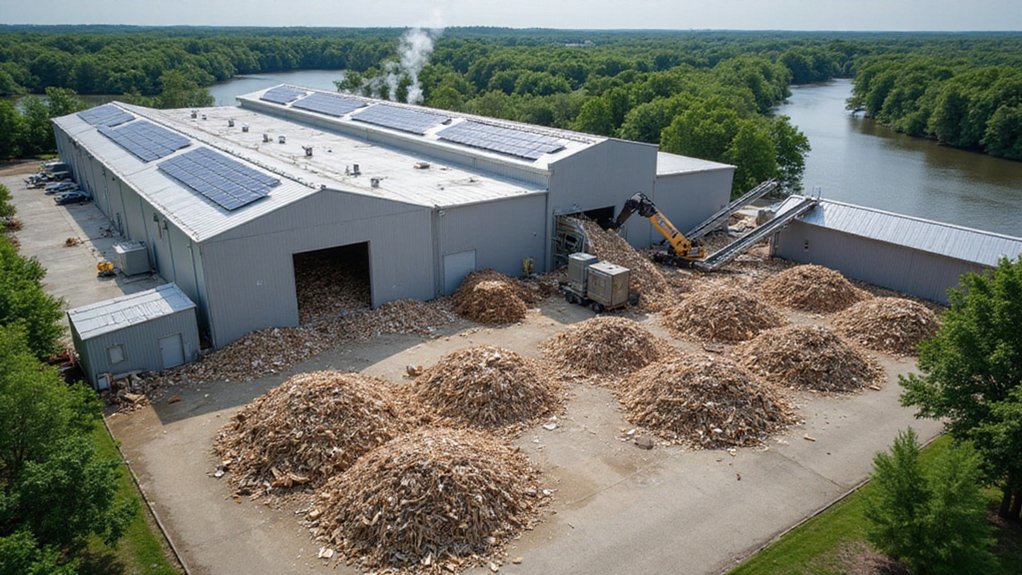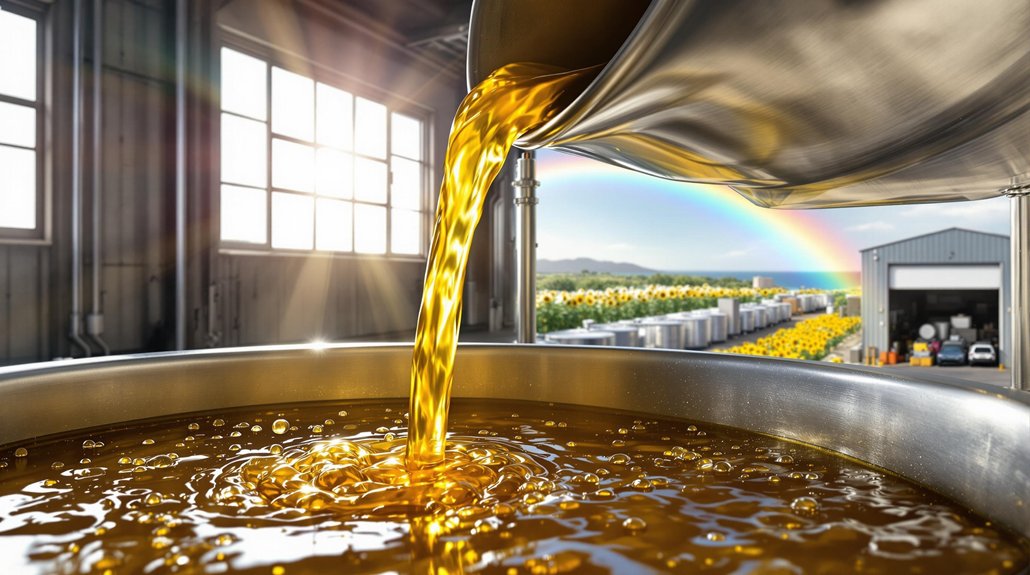Innovation meets necessity in Grand Rapids, where a $2 million investment has established Michigan’s first AI-powered wood waste-to-energy plant. Operated by startup Woodchuck, this facility isn’t just another green energy project—it’s a game-changer. Think mountains of storm debris and construction waste actually being useful instead of rotting in landfills. Finally, a second chance for that broken IKEA furniture.
The technology is pretty slick. AI systems scan and sort wood waste, identifying the good stuff while rejecting contaminated materials. Machine learning algorithms maximize efficiency throughout the process. The facility processes downed trees from city pickups at no cost to residents. The computers are fundamentally telling the humans, “You’ve been doing this wrong for decades.” And they’re probably right.
Environmental benefits are substantial. The facility diverts tens of thousands of tons of wood waste annually from landfills, dramatically reducing methane emissions. Instead of decomposing and releasing greenhouse gases, the waste becomes renewable biomass fuel. Local utilities get cleaner energy. Grand Rapids gets rid of waste at no cost. Everybody wins.
Jobs matter too. The plant created 14 local positions shortly after opening, strengthening Michigan’s reputation in both AI and clean energy sectors. Projects like this contribute to the renewable energy market that’s expected to grow from $189.5 billion to $607.8 billion by 2030. Not bad for a facility that fundamentally processes trash.
The circular economy model is working. The city supplies wood waste, and Woodchuck converts it into valuable fuel. Partners like NorthStar Clean Energy and Beckett Industries have jumped on board. When storms hit—which they do with increasing frequency—the facility processes debris from multiple counties. No more massive burn piles polluting neighborhoods.
Real-time monitoring keeps everything running efficiently. The system continuously improves through AI feedback, making adjustments that humans might miss. Governor Whitmer’s presence at the grand opening ceremony underscored the state’s commitment to innovative clean energy solutions. Data analytics track diversion rates and emissions reductions, proving the concept works.
As the first of its kind in Michigan, the facility demonstrates that mid-sized cities can implement advanced green technologies. It’s a practical solution to a growing problem. Sometimes progress doesn’t need to be complicated—just smart.
References
- https://mix957gr.com/wood-waste-recycling-grand-rapids/
- https://www.wzzm13.com/article/news/local/new-grand-rapids-facility-turns-wood-waste-into-clean-energy-using-ai/69-e1f67fba-df9f-4e5b-abb2-cfb12fa86cee
- https://www.youtube.com/watch?v=AZecxp0RHBs
- https://bioenergytimes.com/grand-rapids-pioneers-ai-powered-wood-waste-to-energy-facility/
- https://www.energytech.com/renewables/news/55289595/ai-enabled-biomass-plant-starts-work-in-michigan









